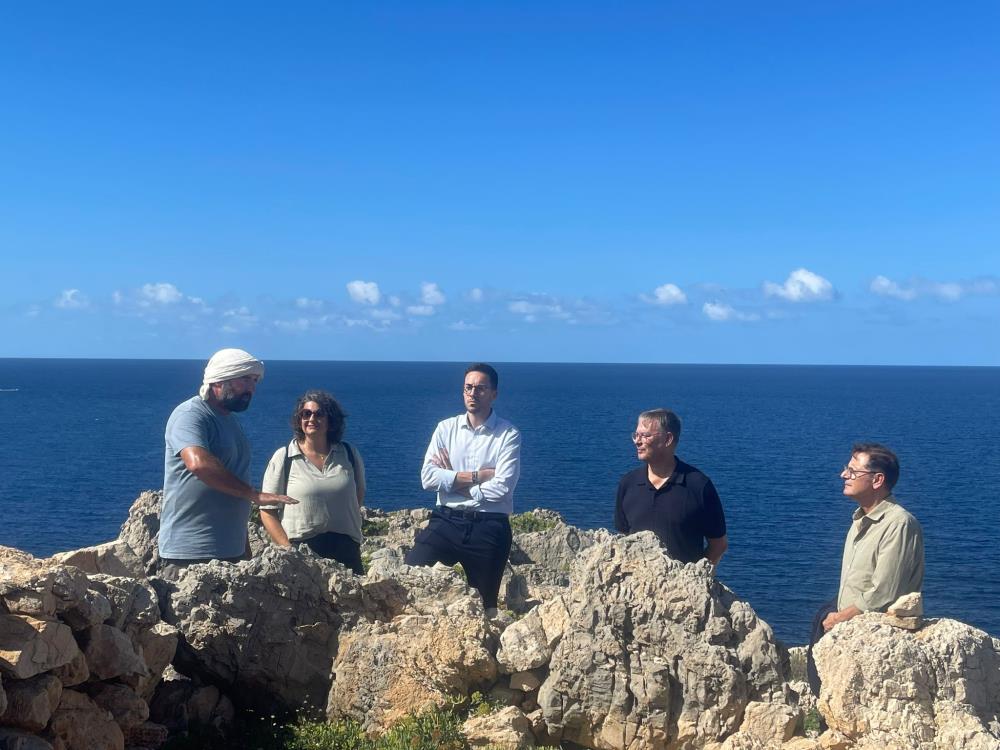
This week marks the start of a new archaeological excavation campaign at Es Coll de Cala Morell, a unique site due to its location: a fortified coastal promontory dating back to the Bronze Age, and therefore predating the Talayotic culture.
The presentation of this 15th campaign was attended by the Councillor for Culture, Heritage, Education and Sports and President of the Talayotic Menorca Agency, Joan Pons Torres; the Island Director of Culture, Jaume Reurer; the Mayor of Ciutadella, Llorenç Ferrer; and the Councillor for Culture, Maria Jesús Bagur. The technical team of the CIMe Heritage Service was also present.
The visit to the site was led by the directors of the
Entre Illes project: Damià Ramis, Maria José León, Magdalena Salas and Montserrat Anglada.
The settlement, made up of domestic navetas, dates between 1600 and 1200 BC. Over more than fourteen years of research, several structures have been uncovered, providing valuable insight into life in this fortified and strategic enclave, chosen by a community seeking protection from potential threats originating from within the island.
So far, 15 dwellings or navetas have been identified, of which four have already been excavated. The settlement also features two central cisterns —an exceptional element in the Balearic Islands— that supplied water to the community, as well as a building located at the highest point, which may have had a symbolic function.
The new excavation campaign, scheduled throughout October, will focus on Naveta 13. This intervention will complete the excavation of the upper area of the settlement and help to better understand the relationship between the different dwellings, as well as the social practices of its inhabitants.
During the institutional visit, the latest lines of research and studies carried out so far were also presented, along with the intention to continue developing the project.
Entre Illes is an initiative promoted by the Friends Association of the Manacor History Museum. With 15 years of work at Es Coll de Cala Morell, it stands as one of the island’s most consolidated archaeological projects. It is supported by the Consell Insular de Menorca, Ciutadella Town Council, and the Can Saura and Manacor Museums.
An open day is scheduled for
26 October, featuring explanations by the project’s co-directors, who will share the latest findings from this year’s campaign.